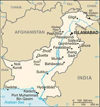The BIS recently published a list of seven new “best practices” to help companies improve their export compliance. Specifically, these best practices are designed to help avoid the diversion of dual-use items at international transshipment points (or “hubs”).
We hear a lot of misconceptions about ITAR and EAR in the process of educating people on these complex regulations. Here are five of the most common misconceptions people make during our various import export training sessions.
DDTC’s proposed new rule on dual and third-country nationals (DN/TCN) becomes final August 15, 2011. In preparation for the implementation of these provisions, DDTC has published a variety of guidelines and answers to frequently asked questions about the new 126.18 exemption.
Ever heard of The Parts Guys? Neither had I. Now, it seems, the whole world knows about this business and its president, Michael Edward Todd. Both were recently charged with conspiracy to illegally export military components for fighter jets and attack helicopters to Iran.
The Bureau of Industry and Security (BIS) today announced the implementation of the latest license exception under the EAR – the Strategic Trade Authorization (STA) exception. You may recall our earlier posts, back when BIS first proposed this new exception.
This week, we’ve all been transfixed by the news that Usama bin Laden was killed by U.S. Special Forces at a hideout in Pakistan. But there’s an interesting footnote to this story, which is starting to get more attention. It has to do with a U.S. helicopter that crashed at the scene.
The U.S. Bureau of Industry and Security (BIS) recently imposed a $575,000 civil penalty against TW Metals of Exton, Pennsylvania. The company allegedly exported titanium alloy and aluminum bar to China and Israel without first obtaining export licenses.
DDTC has served up a new proposed exemption for ITAR replacement parts and incorporated components. This follows several DTAG recommendations, some of which have been incorporated into the new language, and others which have not.
BIS recently issued a TDO (temporary denial order) which contained some interesting allegations about “virtual offices” against a company charged with illegal exports to Iran. The order places Anvik Technologies and its owner, Babak Jafarpour, on the Denied Persons List.
PPG Industries recently agreed to fork over $3.75 million in criminal and civil fines for EAR violations. If anyone says the U.S. government is losing interest in enforcing these regulations, you might refer them to this case.










